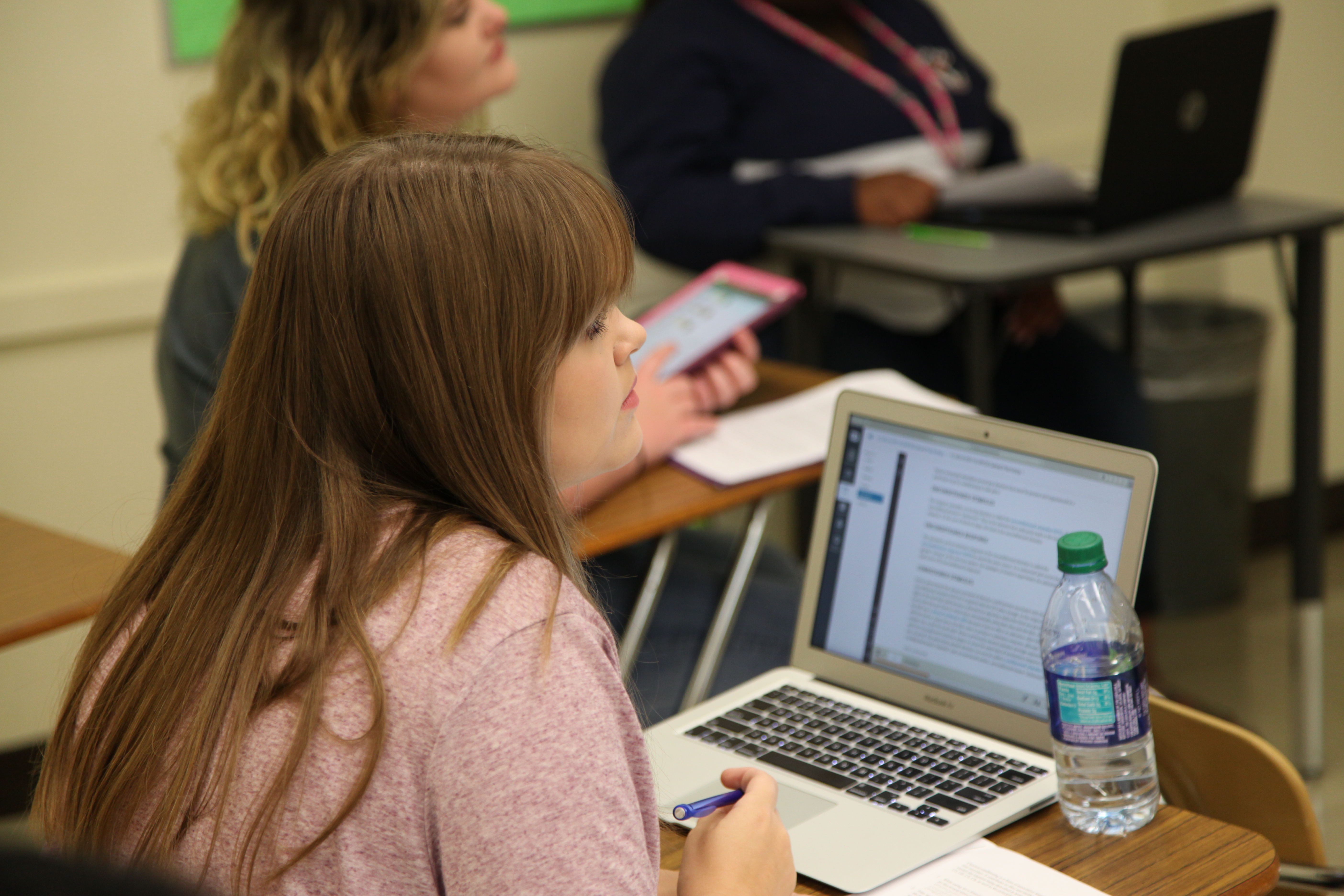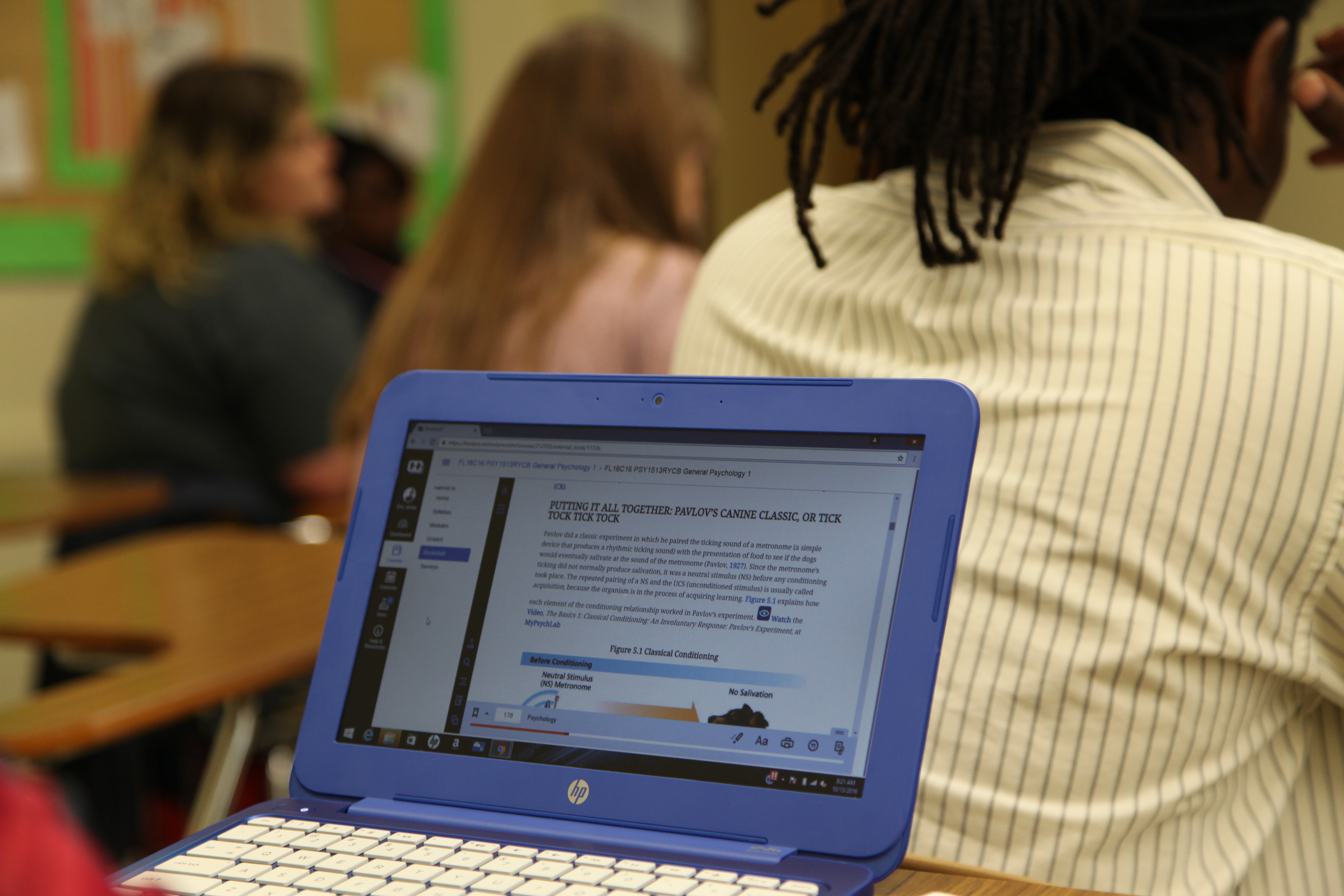I’ve always considered myself a good student. Ask my parents—I think they’d agree. I would dutifully tote textbooks and color-coded binders with matching dividers around everywhere I went, from home to school, school to after-school practices, practices to my part-time job, and then back home every evening, studying any chance I could.
Oh, how things have changed.
Now students have access to all those learning materials and resources from the touch of a small, light-weight device. They can access what they need from anywhere, regardless of what device they are using. In a world of constant change and continuous improvement, finding paths that will encourage student growth, success, and retention are vital in our educational strategies.
Hinds (Miss.) Community College is now a world without lost backpacks, forgotten textbooks, or misplaced notes, fostering a culture that encourages constant learning, even when class isn’t in session.
The Instant-Access Model
Rooted in the basic principles of a community college, our institution believes in opportunities for higher education and training for anyone. This means barriers that prevent students from attending college must be identified, analyzed, and addressed. These barriers include socioeconomic status; geographic challenges; and students with unique, individual life circumstances that hinder the ability to receive a quality higher education.
Four years ago, our president encouraged us to identify potential solutions for two initiatives we identified as strategic goals. First, creating a “first-day ready” concept for our students, and second, lowering the cost of educational resources to our students.
In addition, the need to streamline the distribution of education tools to our growing online population was becoming more evident.
These needed improvements led to the adoption of the “Instant Access” model at Hinds.
(Next page: How the instant access model works; promising results)
How it Works
This model allows us to provide eTextbooks through a common platform and direct access to publisher online resources through our learning management system (LMS). These resources are available on the first day of classes and students are charged greatly reduced fees for these materials as part of their registration process.

One of the initial challenges we faced with this project was providing eTextbooks to students through a common, publisher-neutral platform.
It was important for us to be able to provide students their instructional resources in a centralized location. When eTextbooks are provided through publishers, students have to learn how to navigate multiple platforms in order to use their books, and in many cases, had to be constantly connected online. We did not want to burden our students with this.
After researching the available options and multiple scenarios, we found Bookshelf® from VitalSource® would serve our need for a common interface for all eTextbooks, regardless of publisher.
This adoption brought multiple benefits, including the ability for a student to be offline and still access their textbook, as well as multiple annotation and note-taking functionalities. In addition, students are able to create a more global, cross-discipline source of knowledge with the global navigation search features within the system.
By preloading all learning materials into our course shells through our LMS before a term begins, we ensure all students are provided equal opportunities to be successful in their coursework. They are ready to hit the ground running on the first day of class, without the worry of the administrative processes that seem to overwhelm students before they can even begin their programs of study.

This model allows our teachers to focus on the goals and learning outcomes of their courses by removing barriers that may have prevented successful alignment previously.
Deployment Strategy
Our deployment of this model has been gradual, with a phased approach to implementation. Each semester, selected courses or programs are moved to this model at the request of the program coordinators and faculty.
Some departments have requested all area courses be moved while others have identified those they feel will be successful with the model, excluding some courses. This is based on a needs assessment of how the material and assessments are presented and used within a given course.
In addition, some programs elect to move their online sections to this model while leaving their face-to-face sections on the traditional model.
As with any new initiative, constant monitoring and evaluations must occur in order to ensure the efficacy of Instant Access. Each semester, data is gathered on Instant Access courses and compared to our traditional courses to determine if this model is meeting the needs of our students and faculty.
Promising Analytics
When comparing data for the courses that have adopted this model with the same data from the courses before they adoption, we found lower no-show rates, higher retention rates, and higher success rates.
While it’s always understood in any research that various factors could be influencing those results, we are encouraged to see those three data points moving in the right direction.
Two of the most interesting stories I’ve heard about this project came recently from students. One shared with me how she had visited a family member out of state over the weekend. On her way home, she opened the Bookshelf app on her phone, sat it on the seat beside her, and utilized its “text-to-speech” function so that she could listen to her textbook as she drove.
Another student told me he was preparing for a test late one night at a coffee shop in town and when he arrived, he found it packed with students preparing for final exams. There was only one small table left. At that moment, he was thankful all of his learning resources, including his textbook, notes, handouts, study guides, and publisher-based tools were all accessible one electronic device. I think back to my days of studying at a restaurant (that had horrible coffee but great hash browns) and taking up residency at a six-top table with all my books, papers, spirals, binders, and encyclopedias.
Yes, I know I just dated myself.
Students used to tell me all the time how disengaged they were with their textbooks. They bought them simply because their instructor required it. Students often used them for the bare minimum of what they needed to complete assignments. We believed much of this disengagement came partially from simple inconvenience of accessing the information and of carrying their textbooks around everywhere they went, like I did.
A Rebirth
For Hinds, this model has created a reemergence of the relevancy of textbooks. Students are much more likely to carry their phones, tablets, or laptops than they are an assortment of heavy books. When they can quickly reference the material on the fly, the engagement with and usefulness of these resources begin to reemerge in our learning processes. Finding an answer through the textbook should be just as easy as finding an answer through an internet search engine.
Convenience and access to our learning materials should be seamless. Hinds’ Instant Access is bringing that to our students and is helping to break down the walls of our classrooms to ensure learning can occur anywhere, anytime.
And sore backs and aching muscles across our campuses are thankful.
- Survey: More students want to go to graduate school - April 24, 2024
- Educause, AWS launch generative AI readiness assessment tool for higher ed - April 23, 2024
- A bungled FAFSA rollout threatens students’ college ambitions - April 19, 2024

